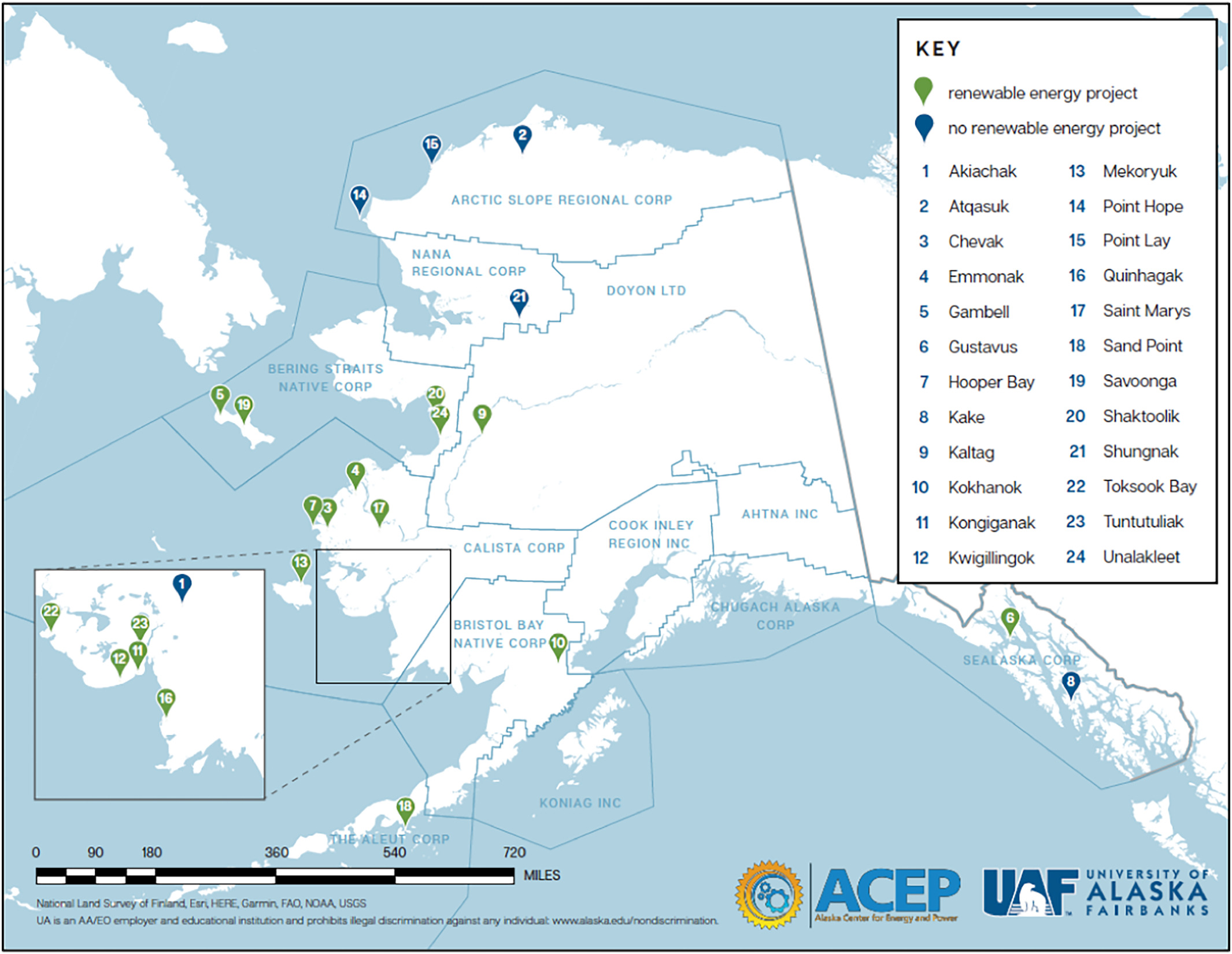Energy Subsidies and Community Capacity Could be Factors in Renewable Energy Integration

While the transition from fossil-fuel based power generation to renewable energy is well underway, this transition is highly uneven and not all regions and communities are engaging equally.
A new peer reviewed article in the journal Energy Research & Social Scienceauthored by ACEP’s Gwen Holdmann and Dominique Pride with University of Saskatchewan’s Greg Poelzer, Bram Noble and Chad Walker explore the disparities in the uptake of community renewable energy in the circumpolar north.
This paper, titled Critical pathways to renewable energy transitions in remote Alaska communities: A comparative analysisinvestigates why some remote communities develop renewable energy projects while others do not. Using qualitative comparative analysis, 24 remote communities in Alaska were compared to identify the combination of explanatory factors that can lead to community renewable energy deployment.
Results show the presence of subsidies can impact transition to renewables as does community capacity, and working collaboratively to pool resources across communities, were found to be key variables in the establishment of renewable projects.
For more information on this paper and the results, please contact Dominique Pride at djpride@alaska.edu.
Image taken from research paper.


